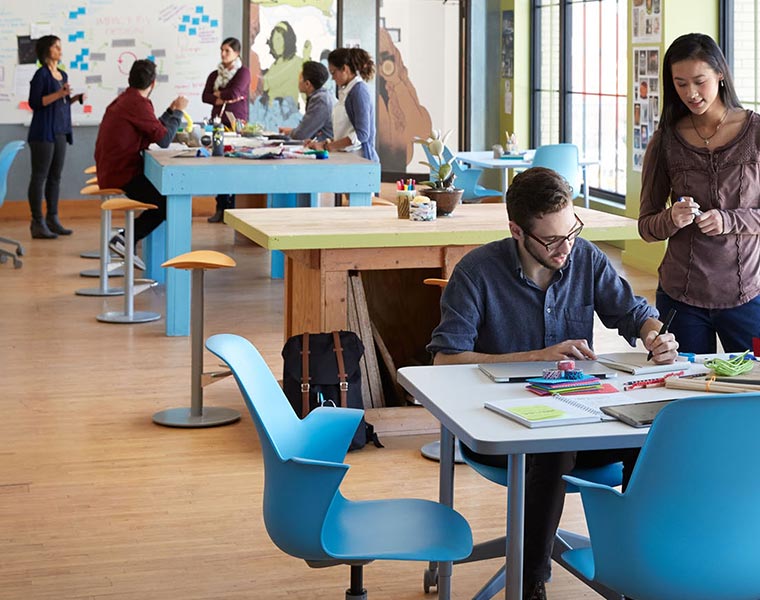Our client, Unilever describe agile working as “an approach to getting work done with maximum flexibility and minimum constraints”. It involves the evolution of traditional processes and modes of work by providing staff with a variety of different settings, facilities and resources, then permitting them to move reactively in between them as they see fit for task or requirement.
Agile working addresses where (location), how (postures, devices) and when (time of day) staff work so is therefore intrinsically connected to activity-based work and hot desking. However, when trying to define agile working, it’s important to understand how it differs from the idea of flexible working.

Although the above is an outline of the rationale behind agile working and how it is applied in the modern workplace, it’s actually an extremely subjective and interchangeable concept.
The whole premise behind agile working is that it can be adapted to meet the requirements of the unique user(s) so there really isn’t a one-size-fits-all, prescriptive definition. In order to further clarify what agile working is, we’re going to delve deeper into its main objectives and benefits…

The aims and objectives of agile working
Agile working is an infrastructural tool used by business owners and employers to meet specific aims and end-goals which include:
• Looking at work as an activity rather than a place in order to boost productivity
• Improving collaboration, communication and idea-sharing internally and externally
• Nurturing better physical health and mental wellbeing in the workplace
• Optimising office space more effectively and efficiently
• Attracting and retaining new and young talent
• Focus more on performance and output rather than fulfilling traditional processes

The benefits of agile working
In line with the main aims of this flexible approach to modern working life, the advantages of agile working are significant – some of the main ones being:
More professional autonomy – The Agile Organisation define this agility as “working within guidelines of the task but without boundaries”, which feeds into the idea that staff can have more choice and control over where, when and how they work as long as tasks are being on time without a compromise on quality.
A better use of space and money – Research carried out by the Agile Future Forum revealed that agile working has the potential to save 3-13% of workforce costs.

Removing dedicated desks and assigned workspaces means you are able to allow for contraction and expansion of numbers, optimising space and lowering overheads.
Maximising use of space and furniture is also a great way to reduce waste and redundant workspaces which is an effective way to become more environmentally responsible and lower the business’ carbon footprint.
Improves physical health and mental wellbeing – Eliminating assigned workstations and allowing staff to become ‘untethered’ provides massive benefits for both physical and mental health.

Physically moving around the workplace will get blood pumping which improves the health of muscles and joints but also encourages better cognitive function. Increased choice and control around their own working day will also give staff an enhanced sense of motivation, belonging and job satisfaction.
All of the benefits outlined above come together to foster an environment of trust, collaboration and strong communication which will, in turn, have a positive impact on performance, productivity and staff engagement.
Click for further reading on the pros and cons of agile working.
